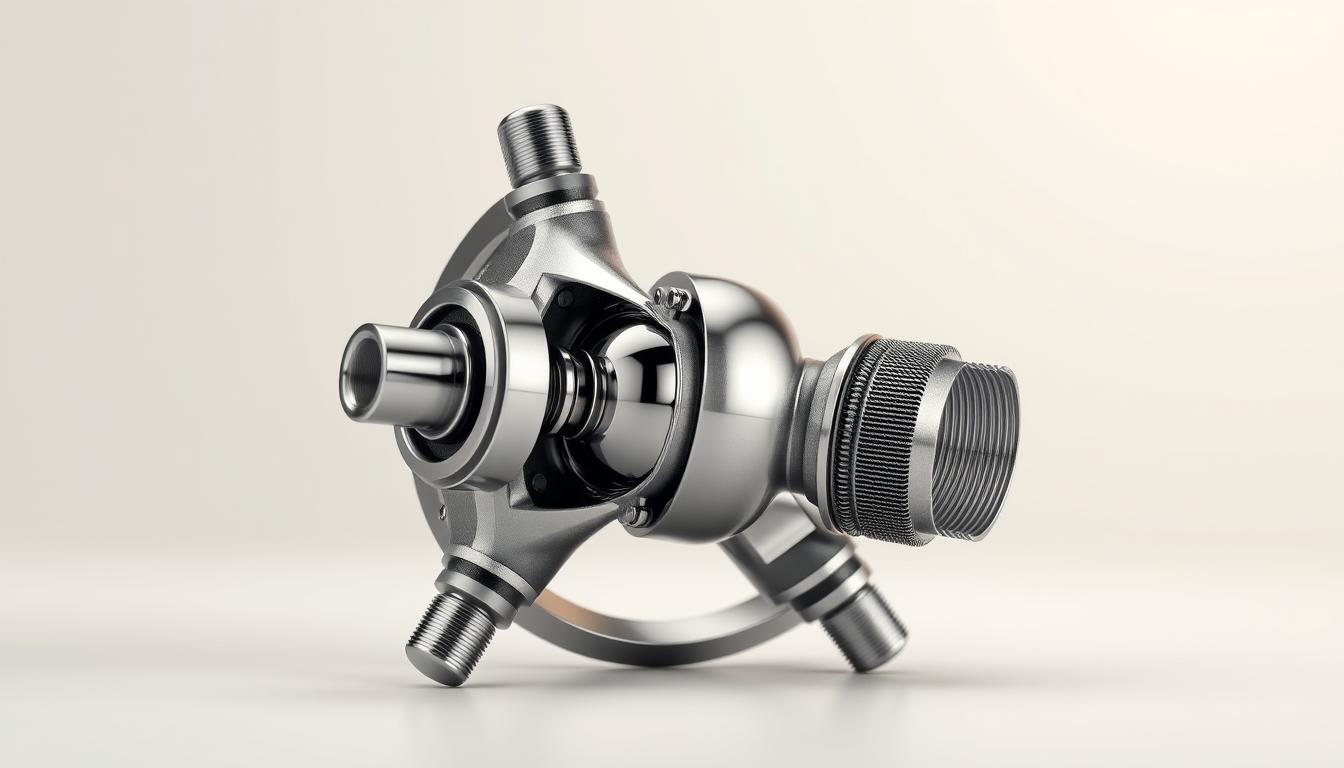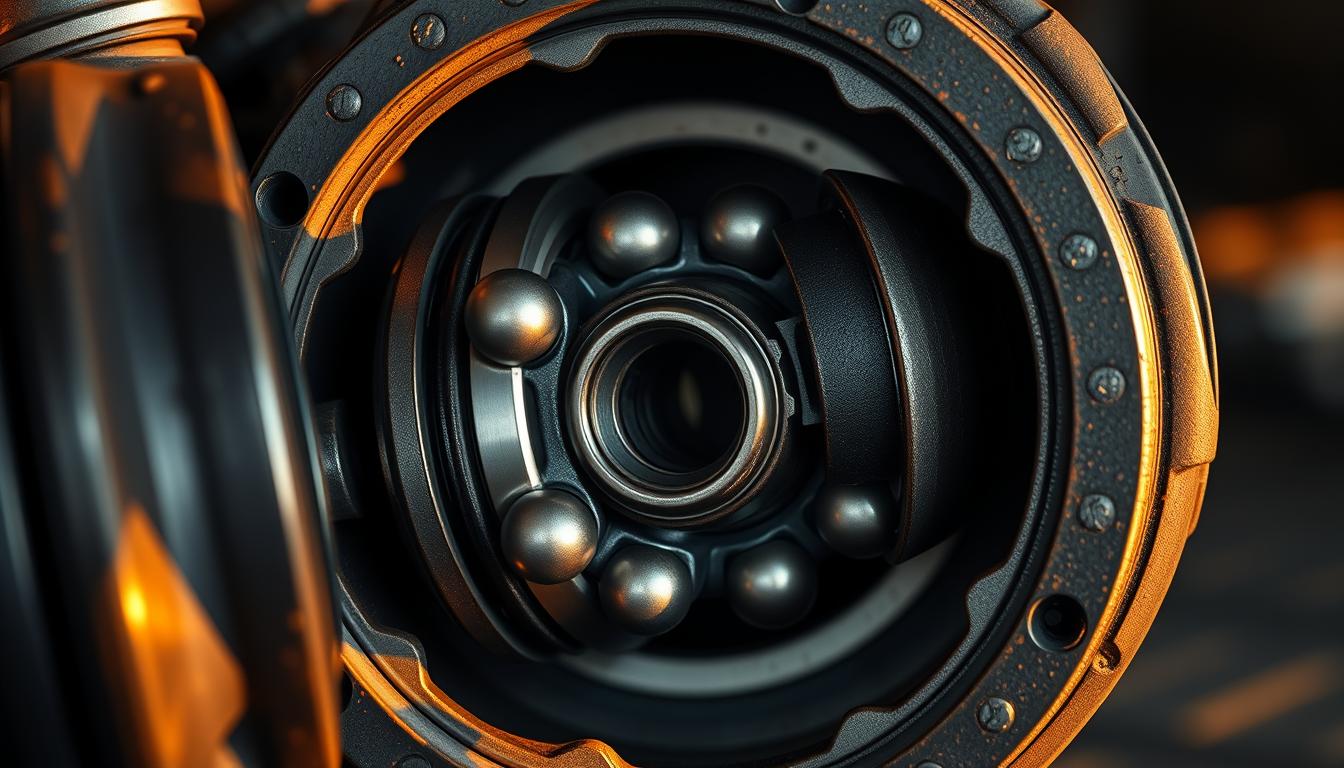Constant Velocity Joint: The Key to Smooth Driving
Key part in today's cars, the constant velocity joint (CV joint) makes sure power goes smoothly to the wheels. This makes driving comfortable and reliable.
The CV Joint is essential for keeping the car stable and running well, even when turning sharply or driving on bumpy roads. It lets the wheels move at a constant speed. This cuts down on vibrations and makes the ride smoother.
Key Takeaways
- Smooth power transmission to the wheels
- Enhanced vehicle stability and performance
- Reduced vibration and jerkiness
- Improved driving comfort and reliability
- Critical component in modern vehicles
What Are Constant Velocity Joints and Why They Matter
Constant Velocity (CV) joints are key parts in today's cars. They help move power smoothly to the wheels. They keep the speed constant between the transmission and wheels, even when the car moves up and down.
The Critical Role of CV Joints in Power Transmission
CV joints are very important in a car's drivetrain. They help move power from the transmission to the wheels. They work with bearing units to make sure power is sent smoothly and well.
- Enable smooth power transmission
- Accommodate suspension movement
- Maintain constant velocity.
How CV Joints Enable Smooth Steering and Suspension Movement
CV joints are made to be flexible and move. This lets cars steer easily and handle road bumps well. It's very important for driving in tough conditions.
CV joints are designed to work well, even when the car's suspension is moving. This keeps the power flow steady and the car stable.
Importance in Indian Driving Conditions
In India, where roads can be tough, CV joints are very important. They help keep the car running well and safely. They handle the stress of bad roads and sharp turns well.
Knowing how important CV joints are and keeping them in good shape helps drivers have a safer and smoother ride.
Types of Constant Velocity Joints
CV Joints come in various types, each designed for specific needs in a vehicle's drivetrain. They ensure smooth power transmission and mobility. This variety meets différents automotive requirements.
Rzeppa Joints : Design and Applications
Rzeppa Joints are common in modern vehicles. They transmit power at a constant velocity, even with angular movements.
Rzeppa Joints are known for their durability and efficiency. They are a top choice for many automotive needs. Their constant velocity under various conditions is a big plus.
Tripod Joints : Structure and Function
Tripod joints handle more axial movements. They have a tripod-shaped spider in a tulip-shaped housing.
Tripod Joints are great for drivetrain setups needing flexibility. Their design helps absorb shocks and stresses from vehicle movement.
Fixed vs. Plunging CV Joints
CV Joints are fixed or plunging based on their function. Fixed CV Joints transmit power without axial movement. Plunging CV Joints allow for axial movement, fitting the drivetrain's needs.
Integration with Bearing Units and Sliding Bearings
CV Joints work well with bearing units and sliding bearings. Sliding bearings are key for smooth CV Joint movement.
"The synergy between CV Joints and sliding bearings is essential for efficient drivetrain performance."
Understanding CV Joint types and their uses shows the complexity of modern vehicle drivetrains.
Common CV Joint Problems and Maintenance
Knowing about CV joint problems can prevent car breakdowns. CV joints help move power to the wheels smoothly. But, they wear out, mainly when driving harshly.
Warning Signs of CV Joint Failure
Spotting CV joint failure signs is key for quick fixes. Look out for :
- Vibrations when speeding up or slowing down
- Clicks or clunks when turning
- Grease leaks around the CV joint boots.
Preventive Maintenance Tips
Keeping CV joints in good shape is easy with regular care. Here's how :
- Check CV joint boots for damage or leaks.
- Listen for odd noises or vibrations from CV joints.
- Make sure CV joints are well-lubricated.
Following these steps can catch problems early.
Relationship with Auto Tensioners and Condition Monitoring Systems
CV joints work with autotensioners and monitoring systems for better car performance. Autotensioners keep belts tight, which helps CV joints. Condition monitoring systems, using sensors, track CV joint health, helping with early maintenance.
| Component | Fonction | Impact on CV Joint |
| Auto-tensionneur | Maintains drive belt tension | Indirectly affects CV joint performance by ensuring proper belt tension. |
| Condition Monitoring System | Monitors CV joint condition | Enables predictive maintenance, reducing the risk of unexpected failure |
Maintenance Considerations for Indian Roads
Indian roads are tough on cars, with lots of potholes. Regular checks and upkeep are vital. Using monitoring systems helps spot problems early.
"Regular maintenance is key to extending the life of CV joints, even in tough driving conditions."
By knowing about CV joint issues and taking care of them, drivers can enjoy safer rides.
Ensuring Smooth Drives with Constant Velocity Joints
Constant velocity joints are key to a smooth drive. They help transmit power efficiently and allow for flexible steering and suspension. Keeping these joints in good shape is essential, even more so when driving in tough conditions.
A condition monitoring system is very helpful in keeping CV joints working well. It helps vehicle owners catch problems early. This way, they can keep their CV joints and vehicle running smoothly for longer.
Knowing how to care for constant velocity joints is important for a smooth ride. Regular checks and advanced monitoring systems peuvent faire que ces parties durent plus longtemps et fonctionnent mieux.




.png)
Comments
Post a Comment